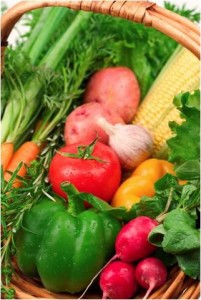Get Your Produce Featured in Local Businesses
In a recent National Restaurant Association survey, 44 percent of chefs surveyed identified local sourcing as the trend that has grown the most over the last decade.
The drive for grow local/eat local is here to stay; restaurants and stores are growing their own or buying from very-near-by urban farms (hyper-local sourcing).
It’s all about environmental stability. This spells an increased need for growers who can consistently provide quality produce.
If that is or can be you, here’s how to start:
- Know what’s in demand or innovating. A good comprehensive resource is Restaurant SmartBrief from the SmartBrief family of industry trends newsletters. Use local business resources that keep tabs on who’s new in the area. Profitable Plants Digest not only provides guidance on selling to restaurants, it also offers recommendations on what to grow – microgreens, heirlooms, and even trees (restaurants need good décor, too).
- Identify a restaurant you’d like to work with, either one that’s established or a newcomer moving into the area. Become familiar with them: eat there.
- Arrange a morning (8:30-9am) or late afternoon (2-3:30pm) visit with the one in charge of food purchasing. This could be the chef or manager or buyer, depending on the size of the restaurant. Introduce yourself as a local grower of fresh whattheyrelookingfor. (Becoming an organic grower is a painful process so you may want to describe your (healthy and green) growing methods.
- Bring samples to your meeting
- Be ready to suggest uses for your produce even if that means suggesting new dishes for the menu. (This is where being familiar with the restaurant becomes invaluable!)
- Have your numbers ready
- amounts that can be regularly and consistently delivered
- delivery schedule
- pricing schedule
And it’s not just restaurants. We toured a nearby continuing care community a few weeks ago and were served lunch during which the chef showed how the meal was prepared.
Pesto Quinoa Salad, Sundried Tomato & Spinach-stuffed Airline Chicken Breast (featuring tomatoes, cucumbers, parsley and sage), and Banana Fosters.
Part of the attraction of these places is communal dining on a 4-star restaurant level; hospitals and schools are also upgrading their offerings. The fresh produce has to come from somewhere, preferably local.
Make no mistake, this is a business enterprise. That means business plans, liability insurance, warranty backing, inspections, permits and licensing. But with a little research and a lot of help from local small business development centers, you’ll grow into your endeavor just fine.
Restaurants are buying:
- Produce, especially heirlooms
- Organic produce
- Less commonly grown herbs
- Hybrids
- Dark greens
- Micro vegetables/greens
- Super hot peppers
- Mushrooms
SOURCES
- 2016 What’s Hot forecast. National Restaurant Association
- How to Sell Organic Farm Goods to Local Restaurants. About.com
- How to Market Your Small Farm Products. About.com
- 7 Ways to Sell Produce to Local Restaurants. Hobby Farms
- Ray L. How to Approach a Restaurant to Sell Your Product. Small Business [Demand Media]
Photo credits: Flickr.com and e-infopages.com
amzn_assoc_placement = “adunit0”;
amzn_assoc_search_bar = “false”;
amzn_assoc_tracking_id = “trybackfarm-20”;
amzn_assoc_ad_mode = “search”;
amzn_assoc_ad_type = “smart”;
amzn_assoc_marketplace = “amazon”;
amzn_assoc_region = “US”;
amzn_assoc_title = “Items you may enjoy”;
amzn_assoc_default_search_phrase = “backyard farming”;
amzn_assoc_default_category = “All”;
amzn_assoc_linkid = “7a8bd5a27e2e774aba4813ab8726761a”;
amzn_assoc_rows = “2”;
Check out these products as well!

